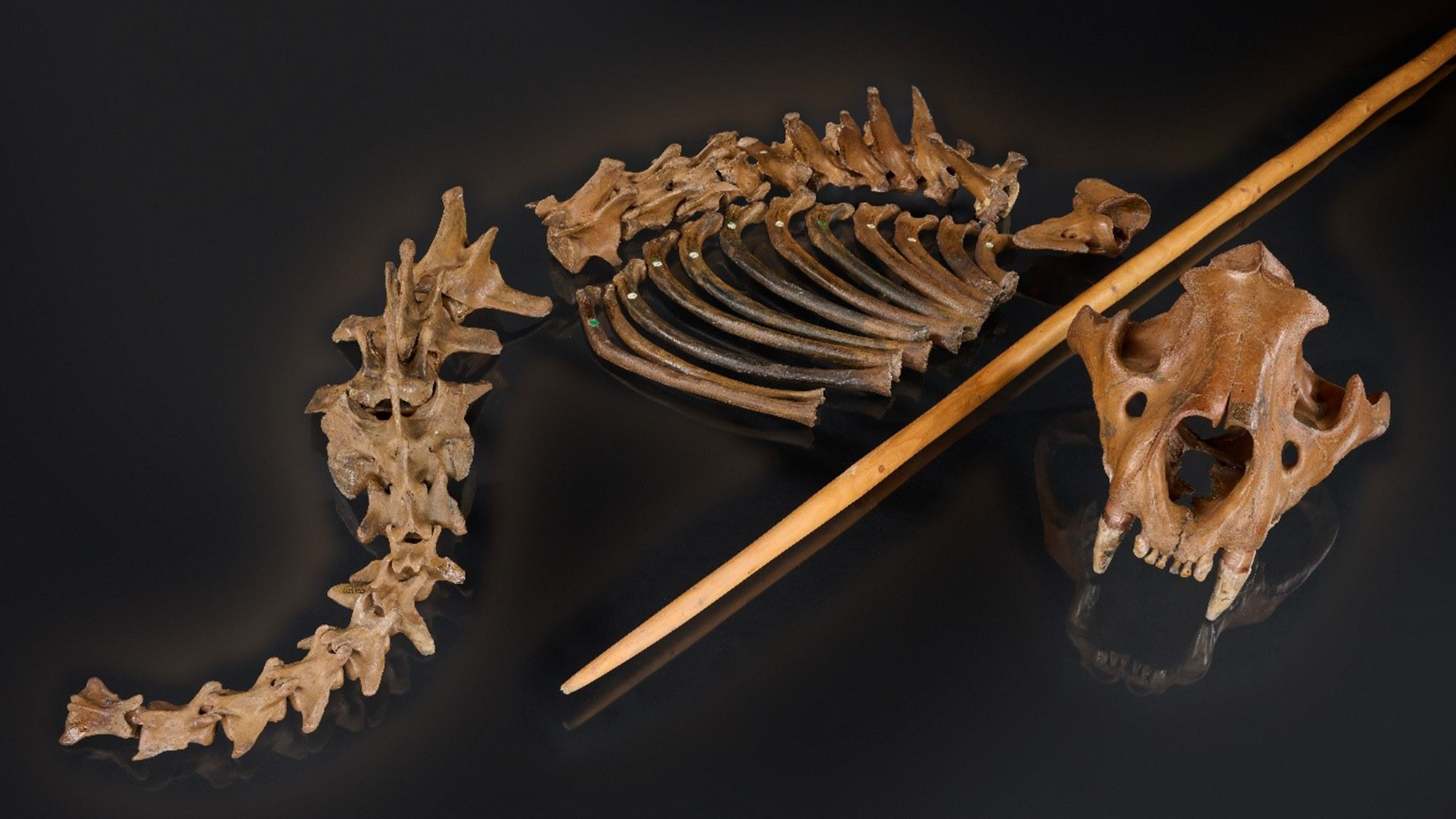

Neanderthals cooked crab and created art, but they also could have haunted cave lions and used their skins. Some 48,000 year-old puncture wounds on a cave lion’s ribcage suggest that the big cat was killed by a Neanderthal’s wooden spear. The findings are described in a study published October 12 in the journal Scientific Reports and may be the earliest known example of lion hunting and butchering by these extinct humans.
[Related: Sensitive to pain? It could be your Neanderthal gene variants.]
For about 20,000 years, cave lions were the most dangerous animals in Eurasia, with a shoulder height of about 4.2 feet high. They lived in multiple environments and hunted large herbivores including mammoth, bison, hose, and cave bear. They get the name cave lions due to the fact that most of their bones have been found in Ice Age caves. The fearsome creatures went extinct at the end of the last Ice Age, but live on through their bones and the 34,000 rock art panels at Grotte Chauvet in France.
In 1985, an almost complete cave lion skeleton was uncovered in Siegsdorf, Germany. The bones are believed to be from an old, medium-sized cave lion. There are cut marks across bones including two ribs, some vertebrae, and the left femur, which lead scientists to believe that ancient humans butchered the big cat after it died.
However, the authors in this new study took another look at the remains. They describe a partial puncture wound located on the inside of the lion’s third rib. The wound appears to match the impact mark left by a wooden-tipped spear. The puncture is angled, which suggests that the spear entered the left of the lion’s abdomen and penetrated its vital organs before impacting the third rib on its right side.
“The rib lesion clearly differs from bite marks of carnivores and shows the typical breakage pattern of a lesion caused by a hunting weapon,” Gabriele Russo, a study co-author and zooarchaeology PhD student at Universität Tübingen in Germany, said in a statement.
The characteristics of the puncture wound also resemble the wounds found on deer vertebrae which are known to have been made by Neanderthal spears. The new findings could represent the earliest evidence of Neanderthals purposely hunting cave lions.
“The lion was probably killed by a spear that was thrust into the lion’s abdomen when it was already lying on the ground.” study co-author and University of Reading paleolithic archaeologist Annemieke Milks said in a statement.
[Related: How many ancient humans does it take to fight off a giant hyena?]
The team also analyzed the findings from a 2019 excavation at the Unicorn Cave–or Einhornhöhle–in the Harz Mountains in Germany. The remains of several animals dating back to the last Ice Age or about 55,000 to 45,000 years ago were found, including some cave lion bones. They looked at bones from the toes and lower limbs of three cave lion specimens. These bones also had cut marks that are consistent with the markings generated when an animal is skinned.
The cut marks suggest that great care was taken while skinning the lion to ensure that the claws remained preserved within the fur. This finding could be the earliest evidence of Neanderthals using a lion pelt, potentially for cultural purposes.
“The interest of humans to gain respect and power from a lion trophy is rooted in Neanderthal behavior and until modern times the lion is a powerful symbol of rulers!” Thomas Terberger, a study co-author and archaeologist at the Universität Göttingen in Germany said in a statement.
Future studies of cave lion bones could reveal more details of more complex Neanderthal behaviors and how the animal may have laid the basis for cultural development by our own species—Homo sapiens.
